
<html>Are you presenting a project? Take full advantage of digital printing options</html>
The success of a project depends on a number of factors. It could be a competition, a tender process, attracting or convincing an investor, or an information campaign for the public. One of the factors influencing the likelihood of success is the quality of the project presentation. Both content and form are important – and even if we may not like it, the form can have a greater impact than we expect. Let’s look at how we can utilize current options in digital printing – specifically large-format printing – to enhance or distinguish the formal aspects of our presentation.
Format. Most commonly, we see presentations in the form of foam boards in B1 format. However, if you are not constrained by the rules of the competition or tender, your presentation format can essentially be anything from a few centimeters to several meters. And it doesn’t have to be a rectangle – why not a circle, triangle, or hexagon if such a shape better resonates with the project's content? Or any other shape – modern technology allows for machining various materials into any shape. Don’t hesitate to engage your imagination and try something new.
Material. The material is an element that can dramatically influence the impact of the presentation. Nowadays, almost anything can be printed on, so unless your budget is a constraint, there is plenty to choose from. Natural materials include glass, metal, wood, or cork. You might be surprised, but paper offers an endless array of interesting options: among graphic papers, we find natural, ultra-smooth, or coarser types that feel like sandpaper, all available in many colors. Papers can be used directly or glued onto a rigid backing board. A great alternative to foam boards are paper boards, which represent a more eco-friendly choice and serve the function equally well. Eye-catching surfaces can also be achieved by combining a backing board, which provides flatness, with a surface layer that has an interesting appearance: here, you can choose from dozens of types of films that imitate metal or wooden decors. You can also apply a concrete overlay to the backing board and print the entire piece.
Special printing effects. Print quality is crucial, and it is necessary to choose a technology that ensures sufficiently sharp printing, even of the smallest details. Modern technologies have the potential to meet even the highest demands. But can they offer something extra? The answer is yes. How about embossed printing that can be felt to the touch? Some elements can rise up to two millimeters (or more) above the printed surface, making the relief visible. Another specialty is printing in white. Thanks to white printing, it is possible to use dark or transparent materials. A clear varnish can highlight certain elements in the graphics (adding gloss) and can also be used to create the previously mentioned relief. In addition to white ink and clear varnish, a fascinating and nowadays available option is printing in metallic silver. Occasionally, print service providers have printers with additional special inks that can be used in interesting ways in the design – it is essential to start communicating with them as early as possible and to make the most of the available options. Contact your supplier and ask for more than just the most common, convenient solution.
Packaging. The visuals of the project form the core of your presentation, but why not present everything in a nice and functional packaging with a design of your choice? Your supplier should be able to help you with the packaging construction; the graphic design will be your responsibility.
All the options described above are available through digital printing, so they are suitable for printing even just one piece. Embossed printing, white ink, clear varnish, and metallic silver ink, a wide range of common, less common, and very unusual materials, the option to use extra-large formats or irregular shapes, and finally a beautiful package – all these options, when used correctly, will enhance the impact of your printed presentation.
Finally, a few tips and interesting facts:
Format. Most commonly, we see presentations in the form of foam boards in B1 format. However, if you are not constrained by the rules of the competition or tender, your presentation format can essentially be anything from a few centimeters to several meters. And it doesn’t have to be a rectangle – why not a circle, triangle, or hexagon if such a shape better resonates with the project's content? Or any other shape – modern technology allows for machining various materials into any shape. Don’t hesitate to engage your imagination and try something new.
Material. The material is an element that can dramatically influence the impact of the presentation. Nowadays, almost anything can be printed on, so unless your budget is a constraint, there is plenty to choose from. Natural materials include glass, metal, wood, or cork. You might be surprised, but paper offers an endless array of interesting options: among graphic papers, we find natural, ultra-smooth, or coarser types that feel like sandpaper, all available in many colors. Papers can be used directly or glued onto a rigid backing board. A great alternative to foam boards are paper boards, which represent a more eco-friendly choice and serve the function equally well. Eye-catching surfaces can also be achieved by combining a backing board, which provides flatness, with a surface layer that has an interesting appearance: here, you can choose from dozens of types of films that imitate metal or wooden decors. You can also apply a concrete overlay to the backing board and print the entire piece.
Special printing effects. Print quality is crucial, and it is necessary to choose a technology that ensures sufficiently sharp printing, even of the smallest details. Modern technologies have the potential to meet even the highest demands. But can they offer something extra? The answer is yes. How about embossed printing that can be felt to the touch? Some elements can rise up to two millimeters (or more) above the printed surface, making the relief visible. Another specialty is printing in white. Thanks to white printing, it is possible to use dark or transparent materials. A clear varnish can highlight certain elements in the graphics (adding gloss) and can also be used to create the previously mentioned relief. In addition to white ink and clear varnish, a fascinating and nowadays available option is printing in metallic silver. Occasionally, print service providers have printers with additional special inks that can be used in interesting ways in the design – it is essential to start communicating with them as early as possible and to make the most of the available options. Contact your supplier and ask for more than just the most common, convenient solution.
Packaging. The visuals of the project form the core of your presentation, but why not present everything in a nice and functional packaging with a design of your choice? Your supplier should be able to help you with the packaging construction; the graphic design will be your responsibility.
All the options described above are available through digital printing, so they are suitable for printing even just one piece. Embossed printing, white ink, clear varnish, and metallic silver ink, a wide range of common, less common, and very unusual materials, the option to use extra-large formats or irregular shapes, and finally a beautiful package – all these options, when used correctly, will enhance the impact of your printed presentation.
Finally, a few tips and interesting facts:
- Have you ever thought about what happens to your presentation once you no longer need it? It probably becomes waste. All paper boards are a more environmentally friendly option than plastic boards or foam boards, which are a combination of paper and several types of plastic and thus represent waste that cannot be recycled after their lifespan.
- Even ordinary gray three-millimeter cardboard – one of the cheapest materials – looks great when printed, especially when using white ink.
- If you don’t insist on a rigid board, you can also print on various textile materials.
- You can combine individual materials in various ways – making cutouts in them, gluing them together, etc.
- The term "foam board" is often used to refer to all boards indiscriminately, but this is not entirely accurate. There is only one true Kapa® – made for over 40 years by 3A Composites in Osnabrück, Germany. Kapa® is actually a series of boards that includes several variants, such as Kapa® Line, Kapa® Plast, or self-adhesive Kapa® Fix. There are many cheaper alternatives on the market today, but they do not always match the quality of true Kapa boards.
The English translation is powered by AI tool. Switch to Czech to view the original text source.
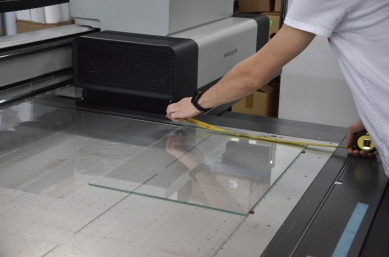
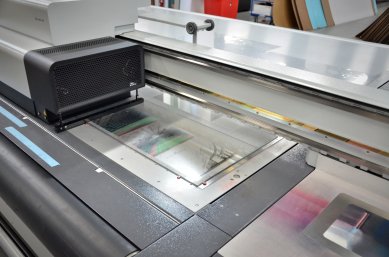
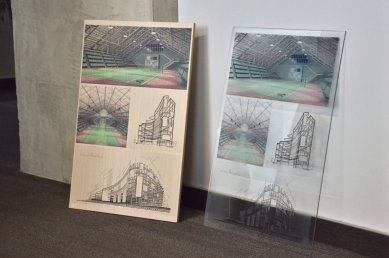


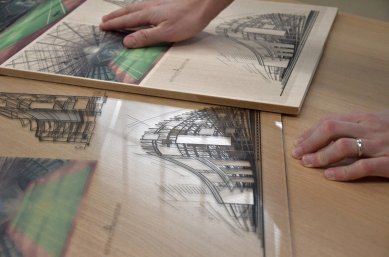
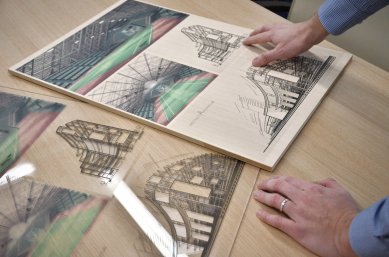


0 comments
add comment













